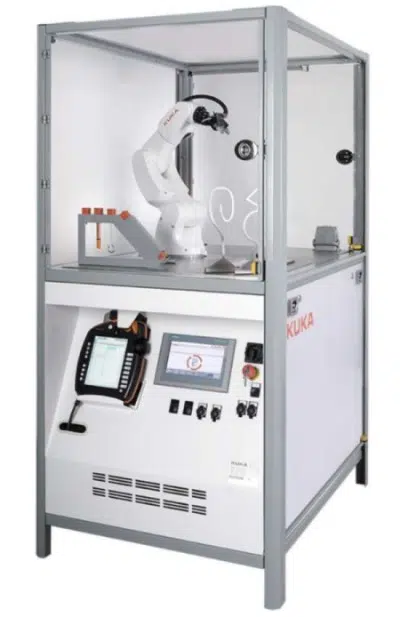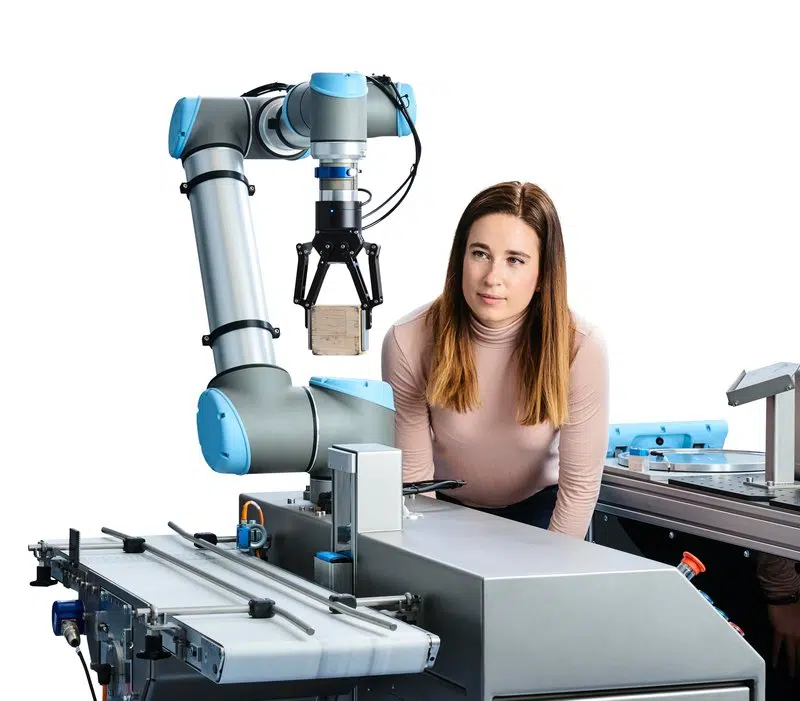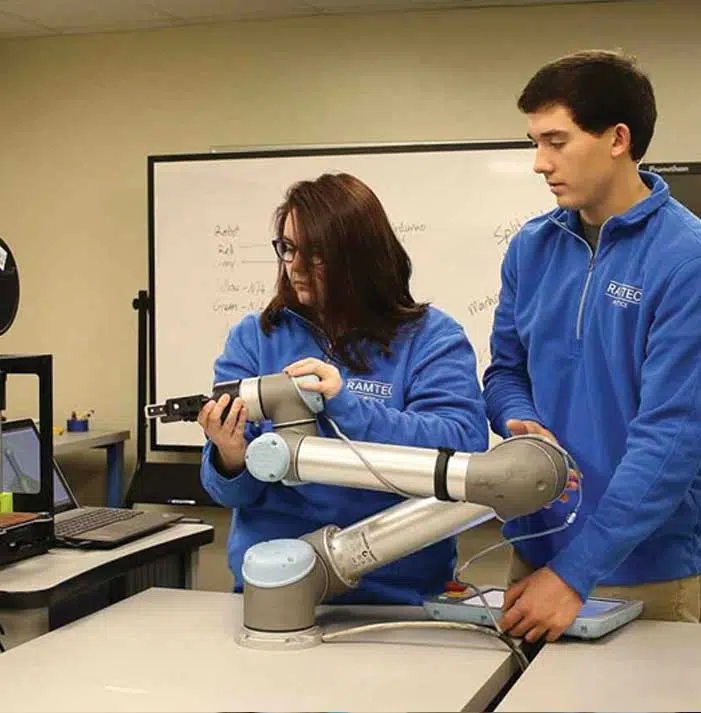Robotics programs for high school students are becoming more common because they teach students valuable STEM and employability skills. Plus, outside of education, robots are the norm in the manufacturing and production industries. Students will be better prepared for the workforce if they are trained with this technology. But how do you choose the right type of robot for your high school robotics lab? We're here to help!
| STEM Skills | Employability Skills |
| Engineering Design Manufacturing Processes Technology Systems | Critical Thinking Interpersonal Skills Communication |
Robotics for High School Students: Choosing a Robot
Choosing the right robot for schools starts with evaluating your program goals. Here are some questions to consider:
- What knowledge level do your students have in robotics?
- What teaching resources do you need to train students?
- Do you want to offer industry certification to your students?
- How will you use robots for your school?
Your answers to these questions will help you select which type of robot is right for your high school.
What Knowledge Level Do Your High School Students Have in Robotics?
If your students are new to robots, you can start by introducing them to the possibilities of robotics with an educational robot, like a DOBOT. Educational robots allow pre-engineering students to use their creativity and critical thinking skills while learning robotic systems in an accessible way. The DOBOT Magician comes with various end-tools so students can learn how robots integrate with 3D printing, laser engraving, writing and drawing.
If you want to incorporate robots used in the industry, look at collaborative robots or industrial robots. They are both programmable robots for high school that are used by manufacturing and production companies in New England.
Collaborative robots are relatively new to the industry, growing in popularity over the past ten years. They work alongside humans and are known for their versatility, ease of use, and safety, making them an excellent choice for introducing high school students to industry-relevant robots. Universal Robots is the leader in collaborative robots. Their user-friendly programming lets students see success right away, with more advanced programming options as they gain more confidence and skills.
Industrial robots have dominated the market and are also used in high schools. They perform functions that humans can't do, like lifting heavy loads (i.e., for automotive and construction industries). They are kept behind a cage, and there's some technical coding needed for programming. KUKA is a world leader in industrial robots with a line of robots specifically made for technical education programs. They come in a stand-alone cell for safety and are pre-configured, so there is minimal prep time before getting students started.

What Teaching Resources Do You Need to Train Students?
Before your students can use robots, you will need training as the educator. You'll want to decide how much support you will need to help you choose the right robot for your program.
The Universal Robots Skills Certification package comes with a 10-unit curriculum delivered online, with pre and post-testing options to track student engagement, and instructors can get certified through their Teacher Certification Program. In addition, our local AET Labs Applications Specialist provides 1-on-1 training in-person or virtually to instructors in New England for ongoing professional development.
Kuka provides student workbooks and exercises and a trainer workbook with example programs for instructors.
Do You Want to Offer Industry Certification to Your Students?
Providing industry certifications in your robotics program will help your high school students stand out when they enter the workforce.
One example of an industry-recognized robotics certification is from Universal Robots. Their certification for collaborative robots is accredited by the International Association for Continuing Education and Training (IACET). It's a mixture of hands-on and in-class work totaling 10 units/32 credit hours covering these topics (and more):
- Safety
- Intro to Robotics
- The Robotics World
- Operations and Motion
- Programming
- Palletizing

How Will You Use Robots for Your School?
You'll want to consider how you can get the most out of your investment in robotics for your high school students. Ideally, we recommend using both collaborative robots and industrial robots to provide the most industry-relevant training to your students. If that's not possible, collaborative robots will have the broadest reach for your high school robotics programs. They can be quickly redeployed for a range of applications that can benefit many CTE programs—pre-engineering, metal fabrication, machine technology, culinary arts, plus workforce development training.
Many students will encounter robotics in some way when they enter the workforce, so providing them with robotics skills now will benefit them in the long run. As an educator, there are many factors to consider in selecting the right robotics for high school students. If you need help deciding on a robot for your New England school, or want help in getting a grant to fund a robot purchase, we can help. Contact us to get started!

